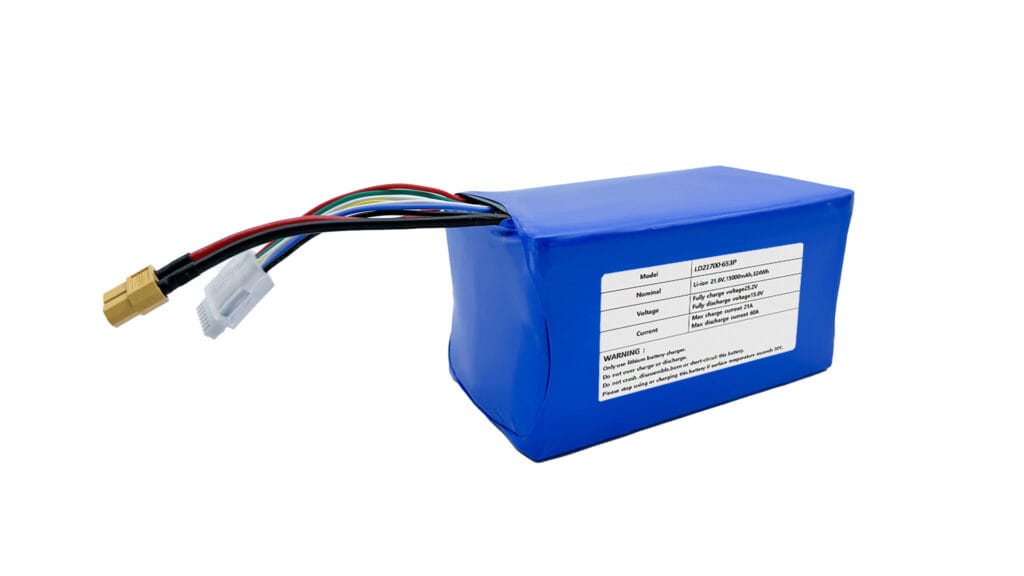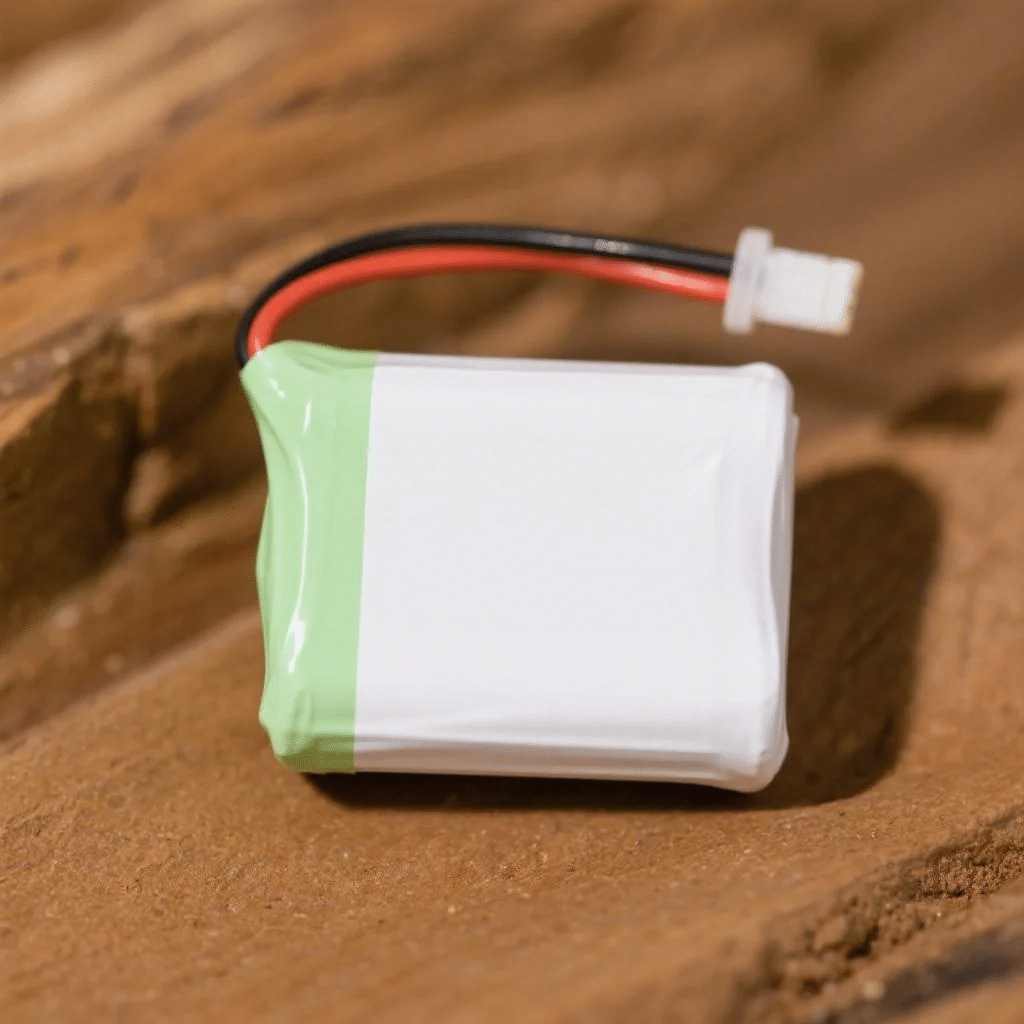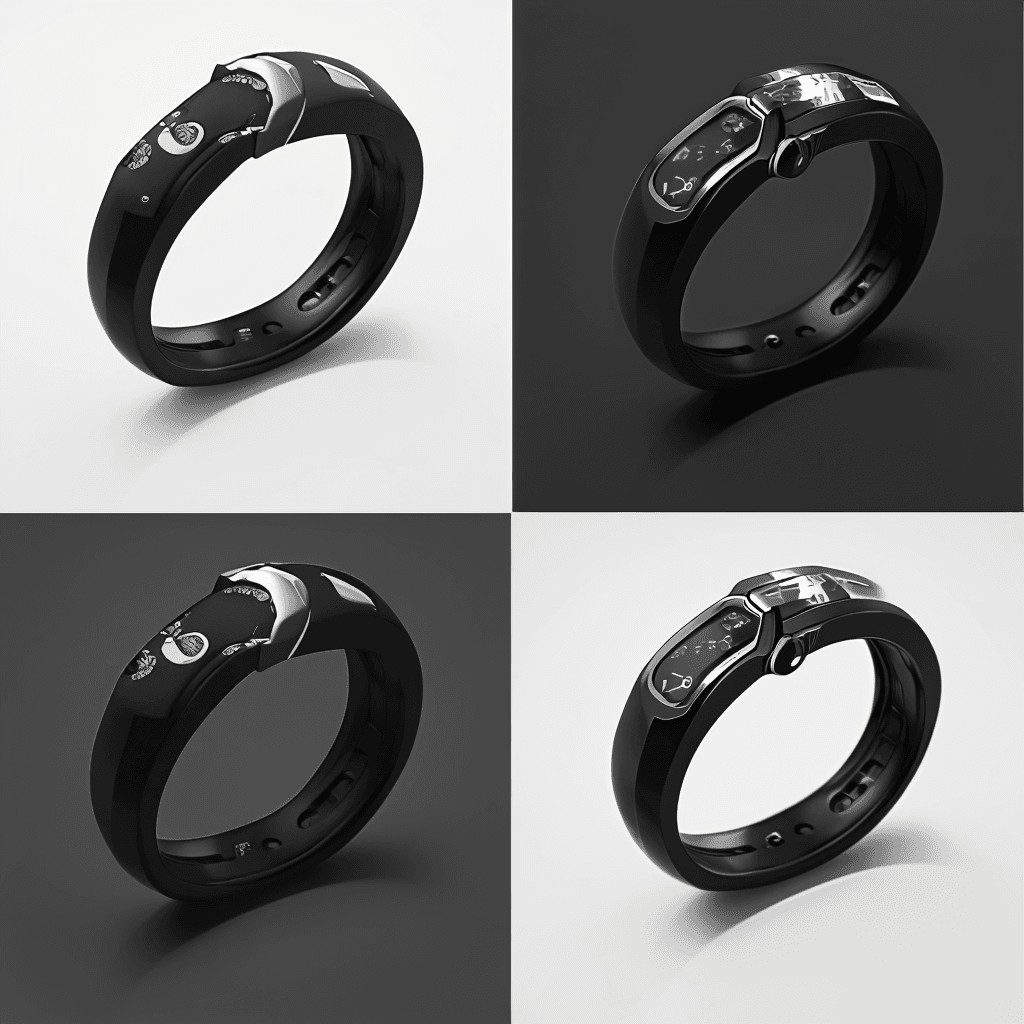A 3.7V lithium battery is a type of rechargeable battery commonly used in a wide range of electronic devices. The “3.7V” refers to the nominal voltage of the battery, which plays a crucial role in its overall performance and compatibility with different devices. Understanding these batteries is essential, especially for those involved in electronics manufacturing or battery-based applications.
What Does “3.7V” Specifically Mean in Lithium Battery Specifications?
The “3.7V” in lithium battery specifications refers to the nominal voltage of the cell, which is the average voltage a fully charged lithium-ion battery delivers during discharge. Lithium-ion batteries, like the 3.7V type, typically have a voltage range of about 4.2V when fully charged and can drop to 3.0V or lower when discharged. This voltage is important because it affects how much power the battery can supply to the device it is powering.
Why Lithium Battery Voltage is 3.7V?
The 3.7V voltage of lithium batteries is the result of the nominal voltage of lithium-ion and lithium polymer cells. To understand why this value is used, we need to delve into the chemistry and structure of these batteries.
1. Chemistry Behind Lithium Batteries
Lithium-ion and lithium polymer batteries are based on lithium metal oxide (LiCoO2) or lithium phosphate (LiFePO4) as the cathode material and a form of carbon as the anode. When the battery is discharging, lithium ions move from the anode to the cathode, releasing electrical energy. This chemical reaction defines the voltage output of the battery.
The nominal voltage (3.7V) is derived from the average potential difference between the anode and cathode during normal discharge. Specifically:
- A fully charged lithium-ion battery has a voltage of about 4.2V.
- As the battery discharges, the voltage drops to about 3.7V.
- When it is fully discharged, the voltage typically reaches around 3.0V.
This 3.7V nominal voltage is considered optimal for most electronic devices because it offers a good balance between energy density, performance, and longevity, making it ideal for powering a wide range of consumer electronics, drones, and other portable devices.
2. Why Not a Higher or Lower Voltage?
-
Higher Voltage: If the voltage were increased, it would result in more potential energy, but this would also raise the risks of overheating, thermal runaway, or even battery failure. Additionally, high voltage would require more sophisticated and expensive components to safely handle the increased energy.
-
Lower Voltage: If the voltage were too low, the energy density would be insufficient to power devices for long durations. Additionally, lower voltage may result in decreased overall performance, requiring more frequent charging.
The 3.7V nominal voltage strikes a balance that offers efficient energy delivery while ensuring safety, longevity, and practical use in consumer devices.
3. Voltage and Energy Density
The 3.7V voltage also aligns with the battery’s energy density. Energy density is a key factor in determining how much power a battery can store relative to its size. Lithium-ion and lithium polymer batteries have one of the highest energy densities among rechargeable batteries, and the 3.7V nominal voltage helps maximize this advantage.
Which Common Devices Use 3.7V Lithium Batteries?
3.7V lithium batteries are used in a wide array of devices, including:
- Smartphones: These devices rely on 3.7V batteries for long-lasting power in compact sizes.
- Drones: Most small and medium-sized drones use 3.7V lithium batteries for their lightweight and high-capacity performance.
- Wearables: Devices like smartwatches and fitness trackers often use 3.7V lithium polymer (LiPo) batteries.
- Electric Vehicles: Some smaller electric scooters and bicycles use 3.7V lithium-ion batteries as part of larger power systems.
- Medical devices: Portable medical devices, like pulse oximeters and hearing aids, also utilize 3.7V lithium cells.
What’s the Typical Lifespan of 3.7V Lithium Batteries?
The typical lifespan of a 3.7V lithium battery is usually around 300 to 500 charge cycles. This means the battery can be charged and discharged 300 to 500 times before it starts to lose its capacity significantly. However, factors like temperature, overcharging, and undercharging can affect its overall lifespan. To maximize the life of a lithium battery, it’s crucial to keep it within the optimal temperature range and avoid frequent deep discharges.
What’s the Difference Between Li-ion, LiPo, and LiFePO4 3.7V Batteries?
3.7V lithium batteries come in several different types of chemistries, each with unique features, benefits, and drawbacks. Here’s a detailed look at the differences between Li-ion, LiPo, and LiFePO4 3.7V batteries:
Li-ion (Lithium-ion) 3.7V Batteries
Li-ion batteries are the most common type of 3.7V lithium batteries used in consumer electronics. These batteries are known for their high energy density and long cycle life, making them ideal for devices like smartphones, laptops, and drones. Li-ion batteries feature a liquid electrolyte and a metal oxide cathode, which allows them to store a large amount of energy relative to their size.
-
Advantages:
- High energy density, providing long usage times for electronic devices.
- More mature technology with widely available and cost-effective solutions.
- Generally less expensive compared to other types of lithium batteries.
-
Disadvantages:
- Less flexible in design (compared to LiPo).
- Slightly heavier and bulkier than other lithium battery types.
LiPo (Lithium Polymer) 3.7V Batteries
LiPo batteries are a newer generation of lithium batteries that use a solid or gel-like electrolyte instead of a liquid. This makes them lighter and more flexible than Li-ion batteries, allowing them to take on various shapes and sizes.
-
Advantages:
- Flexible design: Can be shaped to fit into custom forms, making them ideal for compact electronics like wearables and drones.
- Lighter weight compared to Li-ion batteries.
- Better performance in high discharge rate applications, such as high-performance drones.
-
Disadvantages:
- More expensive than Li-ion batteries.
- Requires careful handling as they are more susceptible to damage from overcharging or puncturing.
- Shorter lifespan when subjected to high temperatures or extreme conditions.
LiFePO4 (Lithium Iron Phosphate) 3.7V Batteries
LiFePO4 is a safer alternative to traditional lithium-ion chemistry. These batteries use lithium iron phosphate as the cathode material. They are known for their stability and long life cycles, making them ideal for use in larger-scale applications, including electric vehicles and energy storage systems.
-
Advantages:
- Extremely safe with a lower risk of fire or thermal runaway compared to other lithium batteries.
- Long cycle life (up to 2,000+ cycles).
- High thermal stability, making them ideal for applications in extreme temperatures.
-
Disadvantages:
- Lower energy density compared to Li-ion and LiPo batteries.
- Larger and heavier, which can limit their application in lightweight, compact devices.
- Higher cost per unit energy when compared to Li-ion.
Key Differences in Summary:
| Feature | Li-ion | LiPo | LiFePO4 |
|---|---|---|---|
| Energy Density | High | Moderate | Low |
| Weight | Heavier than LiPo | Lighter than Li-ion | Heavier than Li-ion & LiPo |
| Flexibility | Rigid | Flexible | Rigid |
| Safety | Moderate risk of thermal runaway | Higher risk of damage/puncture | Very safe, lower risk |
| Cycle Life | 300–500 cycles | 300–500 cycles | 2,000+ cycles |
| Cost | Affordable | Expensive | Expensive |
How to Charge 3.7V Batteries?
To properly charge 3.7V lithium batteries, follow these guidelines:
- Use the correct charger: Always use a charger designed for lithium-ion or lithium polymer batteries. A Li-ion charger ensures safe charging without overcharging.
- Avoid deep discharge: Recharge the battery when it drops to around 20-30% capacity.
- Charge in a safe environment: Charge the battery in a cool, dry area to avoid overheating or potential risks.
- Monitor the charging process: Avoid charging the battery overnight or unsupervised to prevent overcharging.
How to Properly Dispose/Recycle Depleted 3.7V Lithium Batteries?
Proper disposal and recycling of 3.7V lithium batteries are essential for environmental protection:
- Never dispose of them in regular trash: Lithium batteries contain materials that can be hazardous to the environment.
- Use dedicated recycling centers: Look for recycling programs specifically for electronic waste, including batteries.
- Check local regulations: Different regions may have specific guidelines for battery disposal.
- Avoid damaging the battery: A punctured or crushed battery can be dangerous. Always handle with care.
Conclusion
3.7V lithium batteries are widely used in many modern devices because of their compact size, energy efficiency, and high capacity. By understanding their specifications, proper usage, and recycling practices, users can ensure safety, longevity, and environmental responsibility. If you are intrested in more information about lithium batteries, please visit our website at www.landazzle.com.





